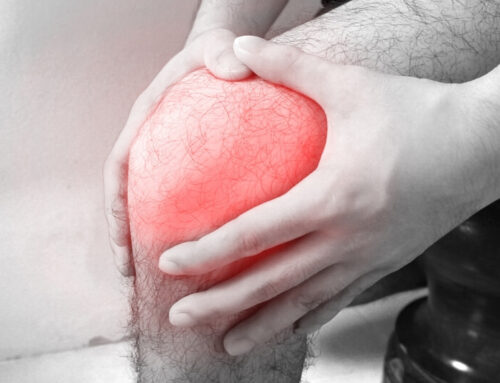
Spring into Flexibility: 7 Powerful Reasons to Stretch Daily for Less Pain and More Movement
Why Flexibility Matters More Than Ever
In our modern, tech-driven lives, we spend more time seated than ever before—whether it’s working at a desk, watching TV, or scrolling through our phones. This sedentary lifestyle contributes to tight muscles, poor posture, and chronic pain. The good news? You don’t need an expensive gym membership or fancy equipment to counteract the damage. A simple, consistent stretching routine can improve your physical health, reduce pain, and give you greater freedom of movement.
The Link Between Muscle Tightness and Chronic Pain
Muscle tightness often flies under the radar until it causes issues. Tight muscles pull on joints, reduce blood flow, and restrict your body’s ability to move efficiently. This can contribute to nagging pain in your neck, lower back, hips, and shoulders. Over time, what starts as a little stiffness can evolve into chronic pain.
How Daily Stretching Reduces Pain
Stretching helps release muscle tension and stimulates blood flow, which nourishes your muscles with oxygen and nutrients. By loosening stiff areas, stretching:
-
Increases circulation to sore spots
-
Reduces inflammation
-
Eases joint stress
-
Decreases pressure on the spine and joints
And the best part? Just 5 to 10 minutes of stretching a day can make a noticeable difference.
The Science Behind Stretching
Stretching isn’t just about feeling good—it’s backed by science.
What Happens to Muscles When You Stretch
When you stretch, your muscles lengthen and your nervous system gets a signal to relax. The fascia (connective tissue around your muscles) also loosens, which helps increase flexibility. Over time, your body adapts by allowing greater movement with less discomfort.
Different Types of Stretching Explained
-
Static Stretching: Holding a stretch for 15–60 seconds. Best after a workout or before bed.
-
Dynamic Stretching: Controlled, gentle movements through a full range of motion. Great as a warm-up.
-
PNF (Proprioceptive Neuromuscular Facilitation): Advanced technique combining contraction and relaxation—best done with a partner or trainer.
Spring: The Ideal Season to Start Stretching
Warmer Weather = Warmer Muscles
Spring’s mild temperatures help your muscles warm up faster, making it safer and easier to stretch. You’re less likely to pull a muscle when your body isn’t stiff from cold weather.
How Nature and Movement Work Together
Spending time outdoors improves mood and energy, and when paired with movement like stretching or light yoga in the park, the benefits multiply. Spring offers a refreshing environment to build new healthy habits.
7 Benefits of Daily Stretching
Let’s break down the seven powerful reasons why daily stretching should become part of your wellness routine:
1. Improves Flexibility and Range of Motion
Improved flexibility means better performance in everyday activities—from tying your shoes to reaching overhead. The more flexible you are, the less likely you are to strain or tear muscles.
2. Reduces Muscle Stiffness and Tension
Stretching relieves tension, especially after long periods of sitting. It also helps you unwind at the end of a busy day.
3. Enhances Circulation and Blood Flow
When you stretch, your blood vessels expand and encourage more oxygen-rich blood to reach your muscles—helping with recovery and muscle function.
4. Boosts Posture and Reduces Back Pain
Tight hamstrings, hips, and shoulders contribute to poor posture. Regular stretching can realign your spine and relieve pressure on your lower back.
5. Minimizes Injury Risk
Flexible muscles are less likely to tear during sudden movements. Stretching also helps identify tight areas that need attention before they become problematic.
6. Supports Stress Relief and Mental Clarity
Stretching isn’t just physical—it helps regulate your nervous system, lowers cortisol (the stress hormone), and encourages mindfulness.
7. Encourages Better Sleep
Gentle evening stretches can help release physical tension and promote relaxation—leading to deeper, more restful sleep.
When and How to Stretch for Maximum Results
Best Times of Day to Stretch
-
Morning: Boosts circulation and gets your body moving.
-
Evening: Helps you relax and unwind.
-
Post-Workout: Prevents stiffness and aids recovery.
Pre-Workout vs. Post-Workout Routines
-
Pre-workout: Use dynamic stretches (e.g., leg swings, arm circles).
-
Post-workout: Focus on static stretches to cool down and elongate muscles.
Morning vs. Evening Stretches
| Time | Type | Benefits |
|---|---|---|
| Morning | Dynamic | Increases energy, preps body for movement |
| Evening | Static | Releases tension, supports better sleep |
Creating a Daily Stretching Routine
Beginner-Friendly Stretch Plan
Here’s a simple plan to get started:
| Day | Focus Area | Sample Stretch |
|---|---|---|
| Mon | Hamstrings & Lower Back | Seated Forward Bend |
| Tue | Hips & Glutes | Pigeon Pose |
| Wed | Neck & Shoulders | Neck Rolls + Shoulder Shrugs |
| Thu | Quads & Calves | Standing Quad Stretch |
| Fri | Full Body | Sun Salutation |
| Sat | Back & Spine | Cat-Cow Stretch |
| Sun | Chest & Arms | Wall Chest Opener |
Tips to Make Stretching a Daily Habit
-
Pair it with an existing habit (like brushing teeth or watching TV).
-
Use reminders or set an alarm.
-
Track your progress in a journal or app.
Tools and Equipment That Can Help
Stretching Aids You Can Use at Home
-
Yoga strap or resistance band
-
Foam roller for myofascial release
-
Bolster or cushion for support
Apps and Online Resources to Guide You
-
StretchIt
-
Yoga with Adriene (YouTube)
-
Nike Training Club App
These tools provide guidance, motivation, and structure for your stretching sessions.
Common Mistakes to Avoid When Stretching
Overstretching and Strain Risks
-
Don’t bounce during static stretches.
-
Avoid forcing your body into positions that feel painful.
-
Start slow and increase intensity over time.
Signs You’re Doing It Right (or Wrong)
-
A good stretch feels mildly uncomfortable—not painful.
-
You should feel better afterward, not sore or stiff.
-
Listen to your body: discomfort is okay, sharp pain is not.
Testimonials: Real Stories of Pain Relief Through Stretching
“I used to wake up stiff every morning. Since adding 10 minutes of stretching before bed, my lower back pain is almost gone.” – Marla, 52
“I sit all day for work, and stretching has completely changed how my body feels. I don’t have that afternoon slump anymore.” – Greg, 34
“Stretching helped me recover faster from workouts and reduced my injuries. I never realized it was that important.” – Lexi, 29
Frequently Asked Questions (FAQ)
1. How long should I stretch each day?
Aim for 10–15 minutes daily to start seeing benefits. You can break this into short sessions if needed.
2. Can stretching help with arthritis pain?
Yes, gentle stretching can reduce joint stiffness, improve mobility, and ease arthritis discomfort.
3. Is it better to stretch before or after a workout?
Both! Use dynamic stretches before to warm up and static stretches after to cool down.
4. I’m not flexible—can I still stretch?
Absolutely. Flexibility improves over time with consistency. Start small and modify as needed.
5. Can stretching help with stress or anxiety?
Yes! Stretching helps lower cortisol and activates the parasympathetic nervous system, which calms your body.
6. What’s the most important muscle group to stretch?
It depends on your lifestyle, but many people benefit from focusing on hip flexors, hamstrings, and shoulders.
Final Thoughts: Flexibility Is Freedom
How One Small Habit Leads to Big Gains
Stretching may seem simple, but its effects are powerful. It improves your body’s function, reduces pain, and boosts your overall quality of life. Whether you’re just getting started or looking to improve your routine, spring is the perfect time to stretch your limits—literally.
Take Your First Stretch Today
Set a timer for five minutes. Roll out a mat. Take a deep breath. Your future self—with better posture, less pain, and more freedom—will thank you.
Share this article
Follow us
A quick overview of the topics covered in this article.
- Why Flexibility Matters More Than Ever
- The Link Between Muscle Tightness and Chronic Pain
- How Daily Stretching Reduces Pain
- The Science Behind Stretching
- Spring: The Ideal Season to Start Stretching
- 7 Benefits of Daily Stretching
- When and How to Stretch for Maximum Results
- Creating a Daily Stretching Routine
- Tools and Equipment That Can Help
- Common Mistakes to Avoid When Stretching
- Testimonials: Real Stories of Pain Relief Through Stretching
- Frequently Asked Questions (FAQ)
- Final Thoughts: Flexibility Is Freedom











